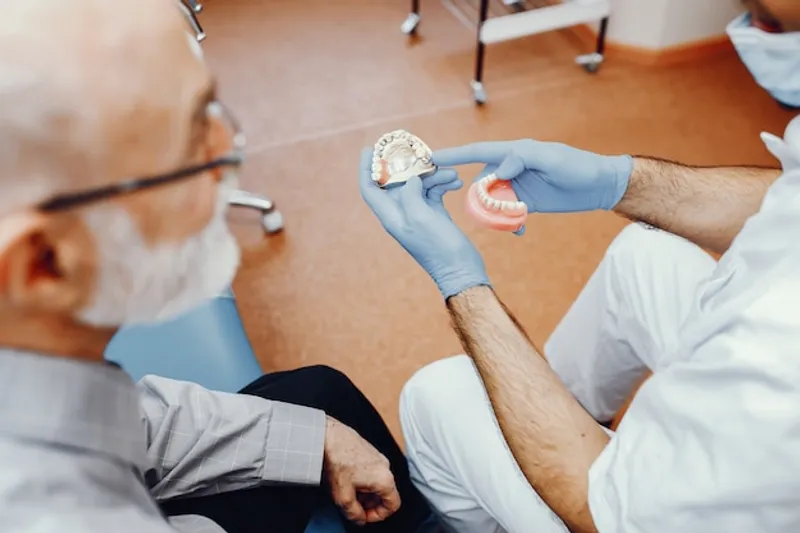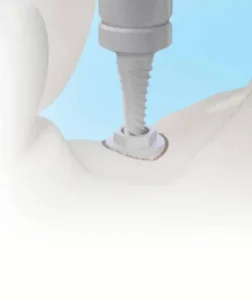Understanding the dynamics of implant moves is crucial when discussing the stability and success of dental implants. Small movements, especially just after surgery, can interfere with the process of osseointegration, where the bone grows around the implant to hold it securely. This article explores factors that contribute to implant mobility and provides information on how to minimize risks associated with these movements, ensuring better long-term outcomes for patients undergoing implantation procedures.
Introduction to Implant Moves
Dental implants have transformed the landscape of oral care, offering a reliable and effective solution for individuals with missing teeth. However, while implants are designed to be a permanent fixture, several factors can lead to their movement, posing potential risks to oral health. Understanding these implant moves is crucial for both patients and dental professionals to ensure the longevity and stability of dental implants. Implant moves can compromise the functionality and aesthetics of dental work. Recognizing the early signs and causes of implant mobility can aid in prompt intervention, preserving the integrity of the implant and preventing further complications. This article aims to provide a comprehensive overview of implant moves, shedding light on their definition, causes, and initial symptoms.
Definition and Types of Implant Moves
An implant move refers to the unintended shifting or movement of a dental implant from its original position. This movement can occur at various stages of the implant process, from the initial placement to after the healing period. Implant moves are generally categorized into two types: early implant moves and late implant moves.
Early implant moves typically occur during the initial healing phase, where the bone has not yet fully integrated with the implant. This is known as osseointegration. Late implant moves happen after the implant has successfully integrated but is later subjected to forces or conditions that cause it to loosen or shift.
Other classifications of implant moves can be based on the direction and nature of the movement, such as horizontal, vertical, or rotational moves. Each type requires distinct diagnostic and management strategies to address the underlying issues effectively.
Common Causes of Implant Moves
Several factors can contribute to the movement of dental implants. Understanding these causes is essential for both prevention and treatment. Some of the common causes include:
- Insufficient Bone Quality or Quantity: Inadequate bone density can lead to poor implant stability.
- Overloading: Excessive force on the implant, often due to bruxism or improper prosthetics, can cause movement.
- Infection: Peri-implantitis and other infections can weaken the surrounding bone and tissues.
- Surgical Technique: Improper surgical methods or placement can lead to implant instability.

Other factors such as systemic health conditions like diabetes, smoking, and poor oral hygiene can also predispose individuals to implant moves. Proper patient assessment and customized treatment planning are crucial in mitigating these risks.
Initial Signs of Implant Moves
Detecting the early signs of implant mobility can help in taking timely corrective actions. Some of the initial signs include:
- Discomfort or Pain: Unexplained pain around the implant site can be an indicator of movement.
- Loosening: A feeling that the implant is loose or shifting when touched.
- Gum Inflammation: Swelling, redness, or bleeding of the gums around the implant.
- Changes in Bite: Alteration in the way teeth come together can indicate implant movement.
Regular follow-up appointments are essential for the early detection and management of these signs. Radiographic imaging and clinical examinations can aid in confirming the diagnosis and determining the appropriate intervention.
For those interested in delving deeper into dental implantology and related topics, numerous resources and articles are available to expand your knowledge and understanding of this dynamic field.
Impact of Implant Moves on Osseointegration
The success of dental implants largely depends on the process of osseointegration, which is the direct structural and functional connection between living bone and the surface of a load-bearing implant. Understanding the impact of implant moves on osseointegration is crucial for optimizing outcomes. Implant moves can be categorized into micro-movements and macro-movements, each with distinct biological and mechanical implications. This article delves into these nuances, emphasizing the importance of minimizing implant moves for successful osseointegration.
Recent studies have demonstrated that excessive implant movements, particularly during the early stages of healing, can disrupt osseointegration. This disruption can lead to implant failure, necessitating further surgeries and treatments. Therefore, it is imperative to address the causes and consequences of implant moves to enhance the longevity and success of dental implants.
In this context, we will explore the biological implications, mechanical consequences, and clinical challenges associated with implant moves in detail.
Biological Implications of Implant Moves
The biological implications of implant moves are significant and multifaceted. During the initial healing phase, the implant site undergoes a series of biological processes, including cellular proliferation, matrix deposition, and bone remodeling. Excessive movements can interrupt these processes, leading to the formation of fibrous tissue instead of bone around the implant. This phenomenon, known as fibrointegration, compromises the stability of the implant.
Moreover, micro-movements exceeding a threshold of 50-150 micrometers can induce a chronic inflammatory response. This inflammation can further delay the osseointegration process, increasing the risk of implant failure. It is essential to maintain stability during the early healing phase to ensure a successful integration of the implant with the surrounding bone tissue.
Studies have also shown that controlled and minimal movements can potentially have a positive effect by stimulating bone growth. This controlled stimulation can enhance bone-implant contact but requires precise clinical management to avoid adverse effects.
Mechanical Consequences
The mechanical stability of dental implants is paramount for their long-term success. When an implant moves excessively, it can lead to a variety of mechanical issues. One of the primary concerns is micromotion at the bone-implant interface, which can impede proper osseointegration. Micromotion can contribute to the formation of a soft tissue layer around the implant instead of bone, thus reducing the implant’s anchorage.
Another mechanical consequence of implant moves is the potential for screw loosening or fracture. When an implant is subjected to excessive forces, it can compromise the integrity of the implant components, leading to complications such as screw loosening or even fracturing of the implant itself. This necessitates additional treatments and can significantly impact patient satisfaction.
To mitigate these mechanical issues, clinicians must employ techniques that stabilize the implant during and after placement. This includes using appropriate surgical protocols, selecting the right implant size, and ensuring precise positioning to avoid undue stress on the implant.
Clinical Challenges
Managing implant moves presents several clinical challenges that require careful consideration. One of the primary challenges is achieving primary stability at the time of implant placement. Primary stability is the mechanical stability obtained immediately after implant insertion and is crucial for preventing excessive movements during the healing phase.
Another clinical challenge is addressing patient-specific factors that may contribute to implant moves. Factors such as bone quality, density, and patient habits (e.g., bruxism) can influence the stability of the implant. Clinicians must perform thorough assessments and tailor treatment plans to accommodate these individual differences.
Post-operative care also plays a vital role in preventing implant moves. Patients must be educated on maintaining good oral hygiene and avoiding activities that could compromise the stability of the implant, such as excessive chewing on the implant site during the initial healing phase.
Continued research and advancements in implant design and surgical techniques are essential to overcome these clinical challenges. By staying abreast of the latest developments, clinicians can enhance the success rates of dental implants and provide better outcomes for their patients.
By understanding the intricate details of how implant moves impact osseointegration, we can take proactive steps to mitigate potential issues. For more insights into dental implants and related topics, be sure to explore our other articles.
Preventive Measures and Management
The success of implantology and bone regeneration largely depends on effective preventive measures and careful management throughout the surgical and healing processes. By adhering to best practices and utilizing advanced technologies, dental professionals can significantly improve patient outcomes and reduce the risk of complications.
Prevention begins with a thorough understanding of the patient’s oral and overall health. This involves comprehensive diagnostics, including imaging and lab tests, to inform the surgical plan. Through a multidisciplinary approach, professionals can identify potential risk factors and address them proactively.
Effective management extends beyond the initial procedure. Continuous monitoring and patient education are crucial in ensuring long-term success. Follow-up appointments and adherence to post-operative care instructions are critical components in preventing complications and promoting optimal healing.
Best Practices in Surgical Techniques
Implementing best practices in surgical techniques is fundamental to the success of implantology procedures. This involves meticulous planning and execution at every step. Pre-surgical assessments should include detailed imaging using CBCT (Cone Beam Computed Tomography) to visualize anatomical structures and plan the optimal placement of implants.
During the surgery, maintaining a sterile environment is essential to prevent infections. Surgeons should be proficient in using minimally invasive techniques that reduce trauma to the tissues and promote faster healing. Flapless surgery, where possible, can minimize soft tissue damage and improve recovery times.
Another critical factor is precise implant placement. Advanced guided surgery techniques, using digital planning and surgical guides, can ensure accurate positioning, reducing the risk of complications and improving implant stability.
Post-Operative Care and Monitoring
Post-operative care is vital in ensuring the success of implant and bone regeneration procedures. Immediate post-surgical instructions often include:
- Managing pain and swelling through prescribed medications and cold compresses
- Adhering to dietary recommendations to avoid compromising the surgical site
- Practicing meticulous oral hygiene while being cautious around the treated area
Regular follow-up appointments are imperative to monitor the healing process. During these visits, clinicians can assess the integration of the implant and the regeneration of bone tissue. Early detection of any issues such as infection or implant mobility allows for timely intervention.
Patient education plays a significant role in post-operative care. Providing clear, concise instructions and addressing any concerns can empower patients to take an active role in their recovery, which can lead to better outcomes.
Advanced Solutions and Technologies
Advancements in technology and materials have revolutionized the field of implantology and bone regeneration. The use of biocompatible materials such as titanium implants and bone graft substitutes has enhanced the predictability and success rates of these procedures.
Regenerative techniques, such as Platelet-Rich Plasma (PRP) and Platelet-Rich Fibrin (PRF), have been shown to accelerate healing and improve bone regeneration. These biological approaches harness the body’s natural healing processes, enhancing tissue repair and reducing recovery time.
Digital technology also plays a crucial role. Intraoral scanners and CAD/CAM systems enable precise planning and fabrication of surgical guides and prosthetics. These technologies help clinicians achieve high accuracy and customization, leading to better patient satisfaction and treatment outcomes. Moreover, advancements in 3D printing have opened new possibilities in custom grafts and implants, tailored to the patient’s unique anatomical requirements. These innovations are pushing the boundaries of what is possible in dental surgery and regeneration.
When pursuing dental health, staying informed about the latest advancements is essential. Explore more articles on our site to stay updated on the cutting-edge technologies transforming dental care.
Common Questions on Implant Movements
When it comes to dental implants, understanding the impact of implant movements on osseointegration is crucial for ensuring long-term success. Here are some frequently asked questions related to this topic.
What causes dental implants to move?
Implant movements can be caused by several factors including inadequate osseointegration, excessive force on the implant due to habits like bruxism, improper implant placement, or insufficient bone density. Early detection and intervention are critical to prevent further complications.
How can implant movements affect osseointegration?
Movement of an implant can disrupt the stable integration of the implant with the bone, known as osseointegration. This instability can lead to implant failure, as the necessary bone bonding does not occur or is weakened, thereby risking the longevity and effectiveness of the implant treatment.

My name is Salman Kapa, a 73-year-old expert in bone regeneration and dental implantology. With decades of experience in the field, I am dedicated to advancing our understanding of oral health and hygiene. Through my research and writing, I aim to contribute to the development of innovative solutions in dental care.




